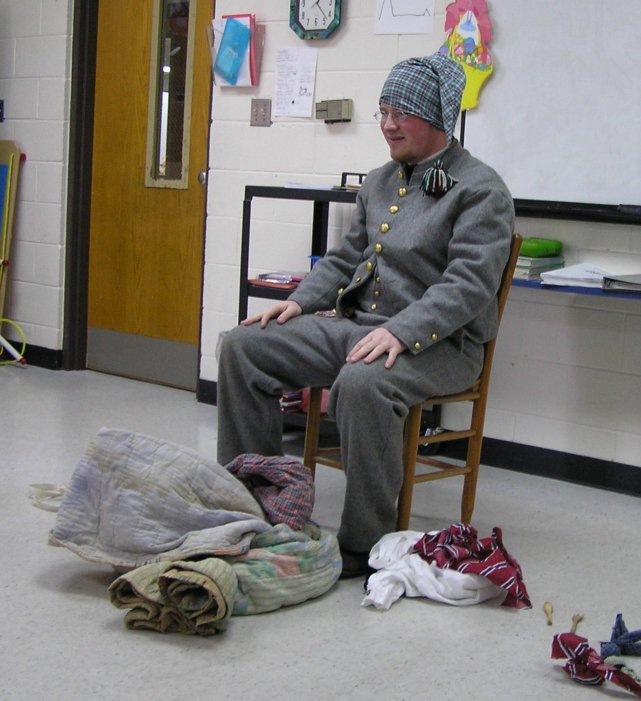|
Tell students that during the Civil War soldiers had to carry at least 40 pounds of equipment and personal items. Have students make a list of the items that had to carry.
| musket |
bayonet |
bowie knife |
| canteen |
cartridge box |
knapsack |
| underwear |
soap |
towels |
| comb |
looking glass |
paper and envelopes |
| pens |
ink |
shoe blacking |
| photographs |
buttons |
fork |
| pencils |
smoking and chewing tobacco |
brush |
| blankets |
rubber ground cloth |
pipes |
| toothbrush |
twine |
cotton strips for wounds |
| spoon |
needles and thread |
|
|
|
|
We invited a Civil War reenactor to visit our class. We learned a lot about the soldiers' clothing and the sleeping roll (full of all necessary supplies including a wooden spoon and fork, tin cup, and even hard tack)!! |

Assign each student a historical figure from the Civil War time period to research. Have the students find at least 5 interesting facts about the person.
Have a history quiz game with the information. Students can divide into two teams. The interesting facts about each person are read. The teams take turns trying to guess who the person is. Points are awarded for correct guesses. The team with the most points after all facts have been read wins.
Watch the burning of Atlanta from the movie Gone with the Wind.
Have students make recruiting posters for the Union and/or Confederate army. Have students list the reasons men should join the army on the posters.
Take a blank map of the United States. Make a color key. Color the map according to the following regions in the Missouri Compromise of 1820:
Free States
Free Territory
Slave States
Slave Territory
Unorganized Territory
Answer these questions:
- What was the purpose of the Missouri Compromise?
- What were the three main parts of the Compromise of 1850?
- What two states were admitted to the Union as part of the Missouri Compromise?
- Where did the Missouri Compromise "imagery line" run?
- Why did new problems about the spread of slavery come up after the Missouri Compromise?
Return to
Civil War Home
|